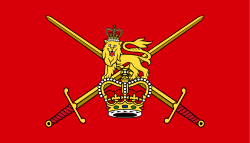This article needs additional citations for verification .(December 2020) |
 |
| British Army lists |
|---|
| French Revolutionary and Napoleonic Wars |
| Victorian era |
| First World War |
| Second World War |
| Regiments |
| Officers |
| Other |
This is a list of British Regular Army regiments after the Army restructuring caused by the 1957 Defence White Paper. The paper set out the reduction in size of the Army to 165,000 following the end of National Service and the change to an entirely voluntary army; units were to be disbanded or amalgamated over two phases, to be completed in 1959 and 1962. [1]
Contents
- Cavalry
- Household Cavalry
- Royal Armoured Corps
- Combat Arms
- Infantry
- Foot Guards
- Line Infantry and Rifles
- Services
- Notes
- References
Further cuts and amalgamations followed in the 1960s and early 1970s.